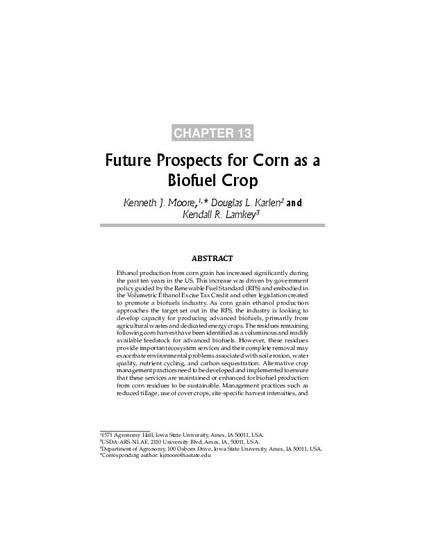
Ethanol production from corn grain has increased signifi cantly during the past ten years in the US. This increase was driven by government policy guided by the Renewable Fuel Standard (RFS) and embodied in the Volumetric Ethanol Excise Tax Credit and other legislation created to promote a biofuels industry. As corn grain ethanol production approaches the target set out in the RFS, the industry is looking to develop capacity for producing advanced biofuels, primarily from agricultural wastes and dedicated energy crops. The residues remaining following corn harvest have been identifi ed as a voluminous and readily available feedstock for advanced biofuels. However, these residues provide important ecosystem services and their complete removal may exacerbate environmental problems associated with soil erosion, water quality, nutrient cycling, and carbon sequestration. Alternative crop management practices need to be developed and implemented to ensure that these services are maintained or enhanced for biofuel production from corn residues to be sustainable. Management practices such as reduced tillage, use of cover crops, site-specifi c harvest intensities, and shifting marginal land currently used for corn production to perennial energy crops show potential for allowing removal of corn residue while maintaining ecosystem services.
Available at: http://works.bepress.com/douglas_karlen/79/

This is a chapter from Moore, Kenneth J., Douglas L. Karlen, and Kendall R. Lamkey. 2014. Future prospects for corn as a biofuel crop. pp. 331‐352. In: Stephen L. Goldman and Chittaranjan Kole (editors) Compendium of Bioenergy Plants: Corn, Science Publishers, Taylor & Francis Group, LLC. Posted with permission.